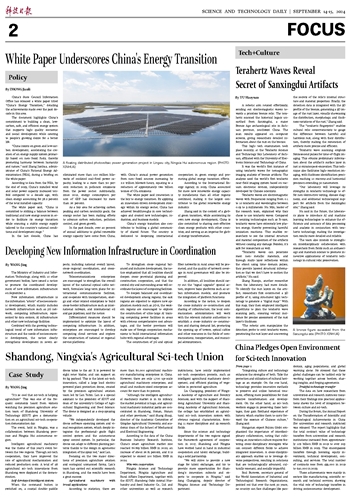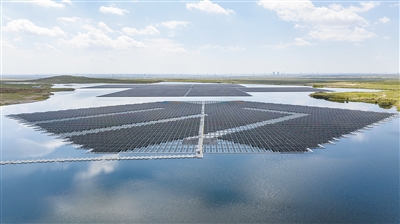
 |
| A floating distributed photovoltaic power generation project in Lingwu city, Ningxia Hui autonomous region. (PHOTO: XINHUA) |
China's State Council Information Office has released a white paper titled "China's Energy Transition," detailing the achievements made over the past decade in this area.
The document highlights China's commitment to building a clean, low-carbon, safe, and efficient energy system that supports high-quality economic and social development while catering to people's growing desire for a better life.
"China insists on green and low-carbon development, accelerating the creation of an energy supply system primarily based on non-fossil fuels, thereby promoting harmony between humanity and nature," said Zhang Jianhua, administrator of China's National Energy Administration (NEA), during a briefing on the white paper.
According to data from the NEA, by the end of 2023, China's installed wind and solar power capacity increased tenfold compared to a decade ago, with clean energy accounting for 58.2 percent of the total installed capacity.
The white paper said, "China is committed to striking a balance between traditional and new energy sources in order to facilitate its energy transition while ensuring a stable energy supply tailored to the country's national conditions and development stage."
In the last decade, China has eliminated more than 100 million kilowatts of outdated coal-fired power capacity, leading to a more than 90 percent reduction in pollutant emissions from the power sector. Additionally, since 2012, energy consumption per unit of GDP has decreased by more than 26 percent.
As a key area for achieving carbon peaking and carbon neutrality goals, the energy sector has been making efforts to advance carbon reduction, pollution control, and green growth.
In the past decade, over 40 percent of annual additions to global renewable energy capacity have come from China, with China's annual power generation from non-fossil sources increasing by 2.2 trillion kilowatt-hours, equating to a reduction of approximately two billion tonnes of CO_2 emissions.
The white paper said innovation is the key to energy transition. By applying an innovation-driven development strategy within its energy sector, China has achieved breakthroughs in core technologies and created new technologies, industries, and business models.
China's energy transition also contributes to building a global community of shared future. The country is dedicated to deepening international cooperation in green energy and promoting global energy transition efforts.
According to the International Energy Agency, in 2023, China accounted for more new renewable energy capacity installations than all other regions combined, making it the largest contributor to the global renewable energy industry.
Zhang said in the context of a global green transition, while accelerating its own new energy development, China is also committed to sharing cost-effective clean energy products with other countries, and serving as an impetus for global energy transformation.


 Next
Next




